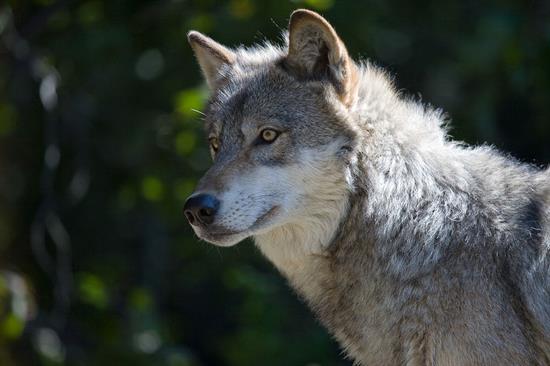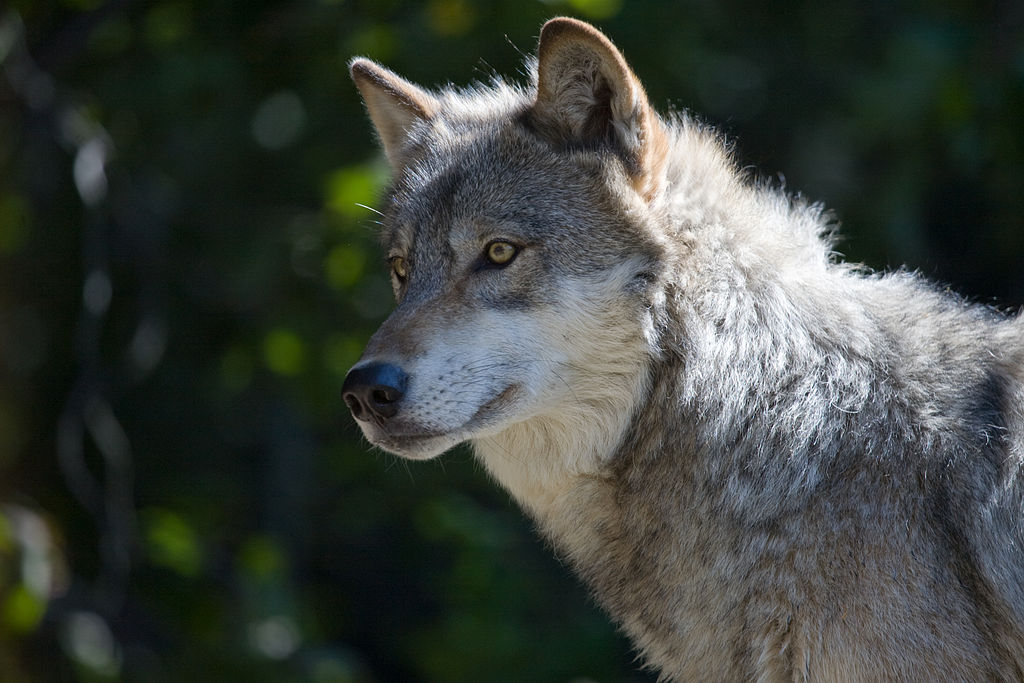|
WASHINGTON, D.C. – Today, members of the Western Caucus released statements applauding the full recovery of the gray wolf and a proposed rule put forward by the Trump Administration to remove the gray wolf from the List of Endangered and Threatened Wildlife in the lower 48 states as a result of a full recovery of the species:
Chairman Paul Gosar (AZ-04): "This is a huge win for the American people! The gray wolf was first placed on the endangered species list in 1976 and has made one of the most successful recoveries in history. In 2013, the Obama Administration's U.S. Fish and Wildlife Service reported that the gray wolf population was no longer in danger and tried to issue a proposed rule to remove the gray wolf as a nationally listed endangered species. However, extremist obstructionist groups like the Sierra Club and the Center for Biological Diversity prevented this administrative action. For years they have gone against the science and facts, instead electing to file litigation that benefited their financial self-interests at the expense of the taxpayer and American cattleman and ranchers. This proposed rule is long overdue. I applaud the work of Acting Secretary Bernhardt who continues to prove that he is a voice for America's heartland and a voice for local communities."
House Natural Resources Committee Ranking Republican Rob Bishop (UT-01): "This decision is long-awaited. For years, scientific evidence conducted by the Fish and Wildlife Service under multiple administrations from both sides of the aisle has shown the gray wolf is recovered and is now thriving. Today, the removal of the gray wolf from the endangered species list is not just a story of conservation success, but highlights the effectiveness of the Endangered Species Act when the federal government is able to collaborate and transfer decision-making authority to state and local wildlife officials and land managers. Unfortunately, this delisting was subject to perpetual litigation and also highlights ESA’s flaws. We need a streamlined delisting process to speed up non-controversial policy proposals like the delisting of the gray wolf. Until then, communities and species will continue to suffer when special interest litigants and activist judges dictate our ESA policy."
Executive Vice-Chairman Scott Tipton (CO-03): "Without an effective method of managing the species in place, the gray wolf poses a threat to livestock as well as other native species habitats. It is long past time that the gray wolf be officially de-listed and I am glad to see the U.S. Wish and Wildlife Service take the steps to see this through. State agencies are better suited to responsibly manage the population by tailoring management plans to meet the unique circumstances and conditions in each state, and ensure gray wolves continue to thrive in a healthy and balanced ecosystem."
Chief Rules Officer Dan Newhouse (WA-04): "The best available science shows that the gray wolf has successfully recovered from the danger of extinction and no longer requires federal protection. We can see in Washington state that the wolf population is growing quickly while being effectively managed by the Washington Department of Fish & Wildlife in the eastern third of the state. I applaud the U.S. Fish and Wildlife Service’s for moving forward with a proposal to delist the wolf in the lower 48 states in order to return management to the states."
Chief Regulatory Reform Officer Andy Biggs (AZ-05): "The gray wolf population has recovered dramatically over recent decades, and yet the Department of the Interior’s Fish and Wildlife Service continues to inexplicably list this species as 'endangered.' As someone who has long opposed DOI overreach, I applaud the decision of Acting Secretary David Bernhardt to delist the gray wolf and return species management to where it properly belongs: with the states and tribes."
Rep. Pete Stauber (MN-08): "This proposed rule is long overdue as the gray wolf species has been recovered for years. Unfortunately, despite the Obama Administration’s science-based decision to delist the gray wolf in 2014, an activist judge in D.C. went against numerous findings and put the gray wolf back on the Endangered Species List. I look forward to the implementation of this rule so that the states can properly manage their own gray wolf population and alleviate the impacts this species has on our local farmers, their livestock, numerous family pets, and big game herds in Northern Minnesota."
Rep. Tom Emmer (MN-06): "I applaud Acting Secretary David Bernhardt’s efforts to return conservation efforts back to the local communities they impact. His plan to move forward with delisting the gray wolf will return local control and allow Minnesota farmers the ability to protect their livelihoods. Minnesotans cherish the beautiful nature and wildlife the state offers, and they should have the opportunity to manage their own conservation efforts. This is an important step towards making that a reality."
Rep. Russ Fulcher (ID-01): "The excess population of wolves in Idaho has proven detrimental to our economy, ranchers, and natural resources. I am extremely pleased with Acting Secretary Bernhardt’s decision to delist the gray wolf and I will continue to support efforts to undo federal government overreach."
Rep. Debbie Lesko (AZ-08): "Arizona knows the danger and destruction gray wolves pose on our ranches and rural communities. But for decades, our state’s ability to manage the native gray wolf population, especially the Mexican gray wolf, has been severely restricted due to its endangered species status. I applaud U.S. Fish and Wildlife Service for taking steps to delist the Gray Wolf and allow individual states and tribes to manage the species, not the federal government."
The Department of the Interior released the following statements:
U.S. Department of the Interior Acting Secretary David Bernhardt: "The facts are clear and indisputable—the gray wolf no longer meets the definition of a threatened or endangered species. Today the wolf is thriving on its vast range and it is reasonable to conclude it will continue to do so in the future. Today’s action puts us one step closer to transitioning the extraordinary effort that we have invested in gray wolf recovery to other species who actually need the protections of the Endangered Species Act, leaving the states to carry on the legacy of wolf conservation."
U.S. Fish and Wildlife Service Principal Deputy Director Margaret Everson: "It is a proud moment when we can tell our children and our grandchildren that the future is secure for these magnificent creatures. Our deepest gratitude goes to all our conservation partners in this victory, particularly the states and tribes who are committed to wolf conservation and will continue this legacy forward."
Background:
Today, the U.S. Fish and Wildlife Service unveiled a proposed rule to remove the gray wolf from the List of Endangered and Threatened Wildlife in the lower 48 states as a result of a full recovery of the species. Management of the species will now be the responsibility of individual states and tribes.
An estimated 7,000 to 11,200 gray wolves live in Alaska and another 60,000 live in Canada. There are now more than 5,000 gray wolves in the lower 48 states.
In 1978, the U.S. Fish and Wildlife Service first listed the gray wolf as an endangered species in the contiguous U.S. with the exception of Minnesota where the wolf was listed as threatened.
The Obama Administration attempted to remove the gray wolf from the List of Endangered and Threatened Wildlife in the lower 48 states in 2013, publishing a proposed rule to delist the gray wolf after finding that the “best available scientific and commercial information indicates that the currently listed entity is not a valid species under the Act.
The Obama Administration also proposed removing protections for gray wolves in Minnesota, Michigan and Wisconsin in 2011.
The Obama Administration's 2013 and 2011 proposals were challenged with frivolous lawsuits from extremist organizations who don't rely on science or facts and seek to fundraise by keeping species on the Endangered Species Act in perpetuity, regardless of merits and findings that an individual species have been recovered.
The Obama Administration removed Endangered Species Act protections for gray wolves in Wyoming, a decision was upheld in 2017.
Courtesy of the Department of the Interior
The gray wolf, an iconic species of the American West, had all but disappeared from landscape in the lower 48 states by the early 20th century. Now it roams free in nine states and is stable and healthy throughout its current range. This constitutes one of the greatest comebacks for an animal in U.S. conservation history. Today, the U.S. Fish and Wildlife Service is re-affirming the success of this recovery with a proposal to remove all gray wolves from protection under Endangered Species Act (ESA).
Thanks to the partnerships involving states, tribes, conservation organizations and private landowners galvanized under the ESA, the Service is now able to propose turning management of all gray wolves back to the states and tribes who have been so central to the species’ recovery. This proposal excludes Mexican gray wolves, which would remain listed under the ESA.
The Service’s proposal to delist the gray wolf throughout the contiguous United States will be open for public comment in the Federal Register beginning on March 15, 2019. Comments must be received within 60 days of publication until May 14, 2019. All comments will be posted on http://www.regulations.gov. This generally means any personal information provided through the process will be posted.
Information on the proposed rule and how to comment may be found at: https://www.fws.gov/home/wolfrecovery/.
|




